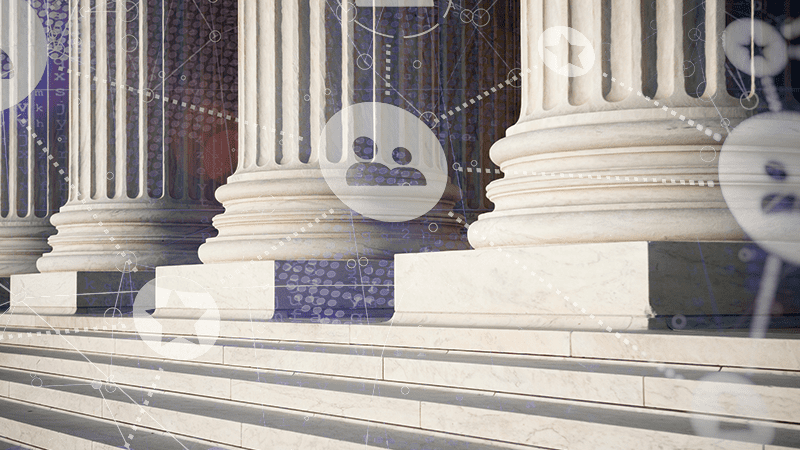Five Construction Cases Where Expert Witness Testimony Made a Crucial Difference
Expert witness testimony can be the deciding factor in complex legal disputes in the construction industry. The insights provided by professional advisors often clarify intricate details and bring critical understanding to the courtroom. Here, we explore five construction cases where expert witness input played a pivotal role in the outcome.
The Big Dig Project, Boston
The Big Dig, one of the most complex and costly highway projects in the United States, faced numerous delays and cost overruns. Dr. Raymond Levitt, a renowned expert in construction management, provided essential expert witness testimony that identified the root causes of these issues.
Impact: Dr. Levitt’s professional advice helped uncover the logistical challenges and mismanagement that plagued the project. His testimony was instrumental in holding parties accountable and implementing corrective measures to prevent further delays.
L’Ambiance Plaza Collapse, Bridgeport, Connecticut
The tragic collapse of the L’Ambiance Plaza, a high-rise apartment building, called for a thorough investigation into the causes of the structural failure. Dr. Kenneth Sands, a leading structural engineer, provided critical forensic analysis.
Impact: Dr. Sands’ detailed examination of the construction methods and design flaws provided clear evidence of negligence. His expert witness testimony was crucial in the litigation process, leading to significant changes in building codes and safety standards.
Harmon Hotel, Las Vegas
The construction of the Harmon Hotel was halted due to significant structural defects. Dr. Deborah Dillon, an expert in construction law and contract administration, provided vital insights into contractual obligations and compliance issues
Impact: Dr. Dillon’s expert witness testimony clarified the responsibilities of the contractors and the developers, highlighting violations of building codes and contractual breaches. Her professional advice was key in resolving the dispute and securing a fair settlement.
Millennium Tower, San Francisco
The Millennium Tower experienced noticeable sinking and tilting, raising concerns about its foundation. Dr. Robert Muir-Wood, a geotechnical engineer, provided expert analysis on soil-structure interaction and foundation integrity.
Impact: Dr. Muir-Wood’s testimony revealed that inadequate site investigation and improper foundation design were the primary causes of the settlement. His professional advice was instrumental in determining liability and recommending stabilization measures to ensure the building’s safety.
New York City Construction Accident
A fatal accident at a major construction site in New York City highlighted serious safety violations. Dr. Karen H. Kraus, an expert in construction safety and OSHA regulations, provided critical testimony on safety protocols.
Impact: Dr. Kraus’ expert witness testimony exposed significant lapses in safety management by the contractor. Her professional advice led to substantial changes in safety practices on construction sites, enhancing worker protection and compliance with OSHA regulations.
Conclusion
Expert witness testimony plays a vital role in resolving construction disputes, ensuring justice, and enhancing industry standards. The professional advice provided by these experts not only clarifies complex issues but also drives improvements in safety and management practices. These cases underscore the importance of expert witnesses in the construction industry, highlighting their indispensable contributions to achieving fair and just outcomes.
more expert witness history:
The first expert witness in American History
Lessons Learned
The Casey Anthony trial emphasized crucial lessons for expert witnesses in legal proceedings.
Strategies for Mitigating Bias
1. Impartial Methodology
Use widely accepted methodologies and adhere to industry standards. Peer-reviewed methods and established protocols help ensure your analysis is objective and credible.
Example: As a forensic psychologist, adhere to standardized psychological assessments and protocols when evaluating a defendant’s mental state to avoid introducing personal biases.
2. Continuous Self-Reflection
Regularly evaluate your work for potential biases. Ask yourself if you are considering all relevant data and viewpoints fairly. Consider also the methodology and results.
Example: After completing your analysis, review your conclusions and consider whether you have given adequate weight to all pieces of evidence, even those that might contradict your initial findings.
3. Transparent Compensation
Keep your compensation structure transparent and fair. Avoid contingency fees or any payment arrangements that could influence your conclusions.
Example: If you are a construction expert witness, disclose your fee arrangement in your report to demonstrate transparency and reduce any perceptions of financial bias.
4. Peer Review
In some cases, it may be appropriate to conduct a peer review of your findings. Having another expert review your work can help identify inadvertent biases and strengthen the credibility of your analysis. Please prioritize confidentiality and check if this is possible on a case-by-case basis.
Example: Before submitting your report, have a fellow expert in your field review your findings to ensure that your analysis is comprehensive and free from bias.
5. Clear Communication
Be clear and concise in your testimony. Explain your findings and methodology thoroughly to avoid any perception of bias or partiality.
Example: When testifying, use visual aids and straightforward language to explain complex technical details, ensuring the jury understands your points without feeling you are swaying them unduly.
6. Maintain Professional Distance
Keep a professional distance from the parties involved in the case. Distance helps maintain your objectivity and prevents any appearance of bias.
Example: Avoid social interactions with the hiring attorneys outside of professional meetings related to the case. This helps maintain an appropriate level of professional distance.
Are you an expert?
Join a thriving community of over 15,000 experts at Expertinfo.com, where your knowledge is valued and your expertise makes a difference. With 40 years of experience in connecting experts like you with attorneys who need your specialized skills, we’re dedicated to facilitating successful collaborations. Don’t miss the opportunity to impact critical legal cases and expand your professional network. Reach out today and become part of our extensive database of leading experts. Your expertise isn’t just needed—it’s essential. Connect with us now and start making a difference!

